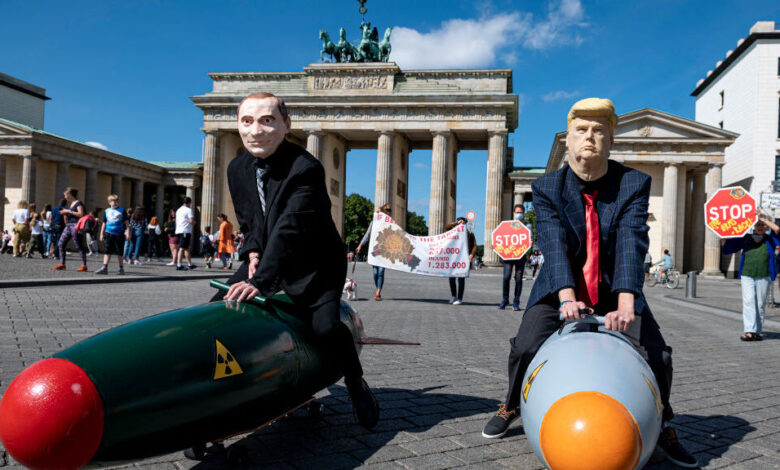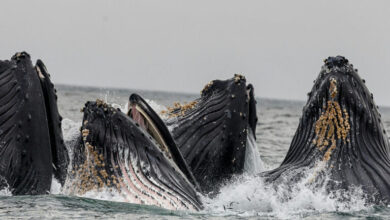
30 July 2020, Berlin, Germany: Two activists disguised as US President Trump and Russian President Putin ride two models of nuclear bombs in front of the Brandenburg Gate during a demonstration for a world without nuclear weapons. Several peace and disarmament organizations as well as environmental protection groups demonstrated on the Pariser Platz for a nuclear weapons-free world before the start of negotiations between the USA and Russia on further action in nuclear arms control. Photo Credit: Picture Alliance via Getty Images
Society USAWe’re Nearing the End of Nuclear Weapons, Thanks to a Landmark Treaty
A treaty banning the use of nuclear weapons has now become part of international law and represents an encouraging commitment towards international disarmament, a priority of the United Nations.
The countries that have signed the Treaty on the Prohibition of Nuclear Weapons (TPNW) cannot develop, test, produce, acquire, have control of, use, or threaten to use nuclear weapons.
“This is the beginning of the end of nuclear weapons,” said Hiroshima survivor Setsuko Thurlow after the treaty was signed in 2017. For the first time, the member nations that signed the treaty are requested to provide assistance to victims of atomic bombs and weapon testing, and to clean environments contaminated by nuclear weapons.
The TPNW strengthens the 1970 Treaty on the Non-Proliferation of Nuclear Weapons. So far, 86 nations have signed the TPNW, and 51 have ratified it, but their number will continue to grow. All major weapons, including anti-personnel landmines, cluster munitions, biological and chemical weapons are as of now deemed unacceptable for their inhumane effects. States that do have nuclear weapons can “destroy then join” the treaty, or “join then destroy”. But ultimately, they must dismantle their weapons, their programs, and their facilities, and accept to be subjected to verifications by an international authority.



